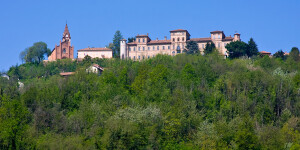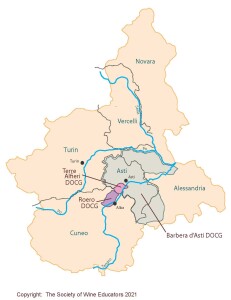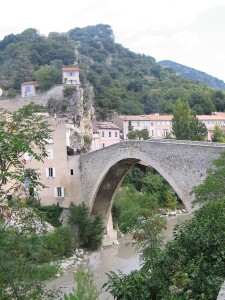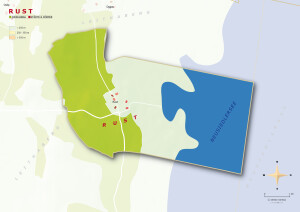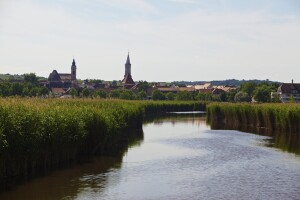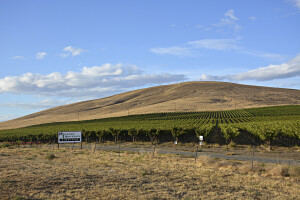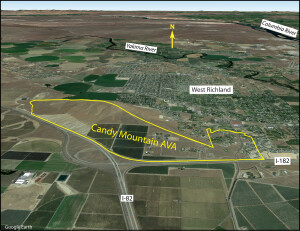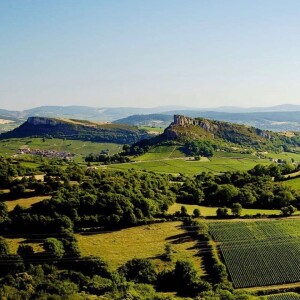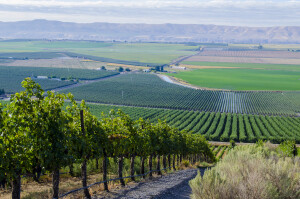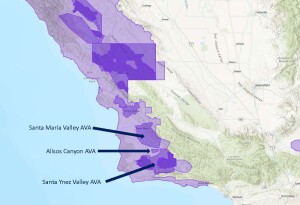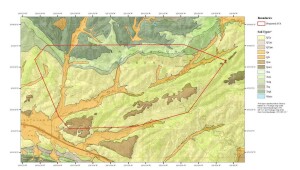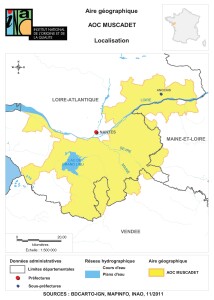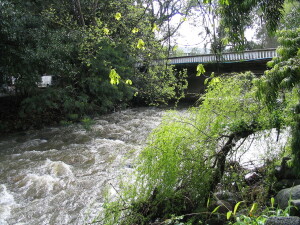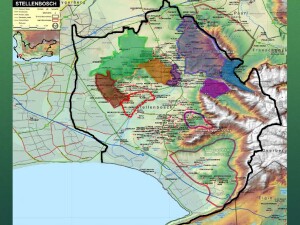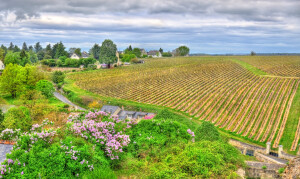Piedmont’s Terre Alfieri wine region has just been promoted from a denominazione di origine controllata (DOC) to a denominazione di origine controllata e garantita (DOCG) wine producing region!
With this latest promotion, Italy is now home to 76 DOCGs. Terre Alfieri is the 18th such region located in Piedmont—solidifying Piedmont’s “first place” status among Italy’s 20 regions in terms of number of DOCGs (Veneto is second, having a total of 14).
The Terre Alfieri DOCG—located just to the east (and slightly north) of the Roero DOCG—includes seven communes located in the province of Asti (Antignano, Celle Enomondo, Cisterna, Revigliasco, San Damiano, San Martino Alfieri, and Tigliole) and four in the province of Cuneo (Castellinaldo, Govone, Magliano Alfieri, and Priocca).
Terrie Alfieri DOCG produces two styles of wine: red wines based on Nebbiolo and white wines based on Arneis. These are the same two styles of wine that were previously made when the region was a DOC, and the same two that its neighbor—the Roero DOCG—produces. A few rules and regulations have been updated with the recent promotion to DOCG status, which now reflects the following standards:
- Terre Alfieri Arneis: minimum 85% Arneis, minimum 12% abv
- Terre Alfieri Arneis Superiore: minimum 85% Arneis, minimum 12.5% abv, minimum 6 months aging
- Terre Alfieri Nebbiolo: minimum 85% Nebbiolo, minimum 13% abv, minimum 4 months aging
- Terre Alfieri Nebbiolo Superiore: minimum 85% Nebbiolo, minimum 13.5% abv, minimum 1 year of aging (including 6 months in wood)
- Terre Alfieri Nebbiolo Riserva: minimum 85% Nebbiolo, minimum 13.5% abv, minimum 2 years of aging (including one year in wood)
The region—named for the noble Alfieri family that ruled these lands many generations ago—was first awarded DOC status in 2009.
Welcome to the world, Terre Alfieri DOCG!
Note: As with all such updates, this change will need to wind its way through EU approval; however, as the Italian government has granted their approval, the changes can be implemented in the meantime. Most likely, the Terre Alfieri DOCG will apply as of the release of the wines of the 2020 vintage. If the EU fails to approve the amendment, the regulation will be rescinded (although this seems unlikely to happen).
References/for more information:
- Disciplinare Terre Alfieri DOCG
- Gazzetta Uffciale October 21, 2020
- https://www.targatocn.it/2020/07/29/sommario/agricoltura/leggi-notizia/argomenti/agricoltura/articolo/il-terre-alfieri-conquista-la-docg-castellinaldo-govone-magliano-e-priocca-tra-gli-11-comun.html
Post authored by Jane A. Nickles…your blog administrator: jnickles@societyofwineeducators.org
